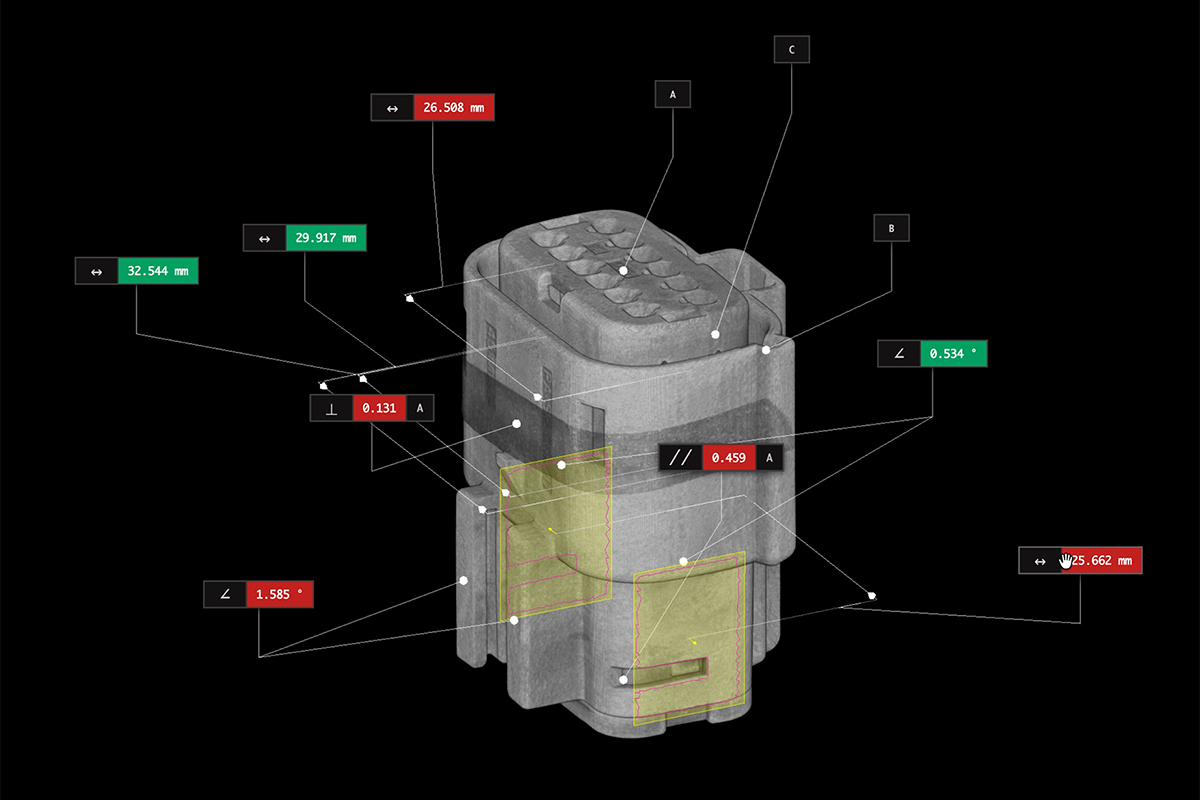Looking inside real vs. fake AirPods with industrial CT
Today's counterfeit products are so sophisticated that they often appear visually and functionally identical to the genuine articles—at least initially. For both manufacturers and consumers, counterfeits present a serious challenge: how can you ensure the quality and safety of your products?
CT scanning, a technique once reserved for medical diagnostics, has found a new purpose in the fight against counterfeit electronics. Industrial CT scanners like the Neptune allow engineers to inspect and optimize their designs throughout the product development cycle, from R&D to field support. They’re also the perfect tool for identifying fakes with precision. Along the way, they also reveal the complexity and sophistication of the engineering that goes into genuine products.
We examined the internal structure of Apple’s AirPods Pro and MagSafe 2 power adapters for MacBook, exposing the shortcuts and compromises made in counterfeit versions that could compromise functionality and user safety.
Apple AirPods Pro
Batteries
Batteries are the key to the wireless convenience and flexibility of the AirPods design, so we started there. The authentic AirPods house meticulously-engineered button cell batteries in each earbud, designed to fit snugly within the compact form factor and provide optimal power efficiently. In contrast, both specimens of counterfeit AirPods contain lithium-ion pouch cell batteries that are not only less sophisticated in their construction but also potentially less safe. The rectangular pouches are crammed into circular spaces rather than tailored to fit.
Circuitry
Moving to the internal circuitry, the genuine AirPods are a marvel of miniaturization and precision engineering. They use a combination of rigid and flexible printed circuit boards to pack components densely and ensure that every millimeter of space is used effectively. On the other hand, the counterfeit AirPods reveal much simpler electronics cobbled together from off-the-shelf components. That leaves less room for functionality; the counterfeits have fewer microphones and less control circuitry, compromising their sound quality.
Build quality
Lastly, the contrast in overall build quality is dramatic between the genuine AirPods and their counterfeit counterparts. One of the fakes doesn't offer wireless charging at all (no coils are visible in the scans), and the other one has wireless charging coils but lacks the magnets that snap the real AirPods case onto Apple's Watch charger. The counterfeit AirPods even resort to using internal weights with no other function than to mimic the heft of the genuine product, a deceptive tactic for making them feel heavier to compensate for poorer materials and less functionality. These fakes may replicate the visual cues of the original, but the use of substandard materials not only affects the tactile experience but also compromises the structural integrity and overall lifespan of the product.
Apple MagSafe 2 Power Adapters for MacBook
Power cycling
We also CT scanned a genuine and counterfeit 85W MagSafe 2 Power Adapter for MacBook, finding differences in their internal circuitry and power cycling systems. The genuine Apple charger has a sophisticated power management system that includes components for power conditioning and conversion. The counterfeit charger's internal circuitry is far less complex, lacking the filtering features that ensure safety and longevity in Apple's charger. This simplified internal structure not only raises concerns about the counterfeit’s performance but also its ability to safely manage the power supplied to your devices.

Explore the real charger scan
Heat sinks
Our CT scans reveal an intriguing difference between the heat sinks in the real and counterfeit chargers. The genuine charger uses a relatively thin heat sink that wraps around most of the transformer. The counterfeit uses a heavier, but simpler heat sink design. Apple’s heat sink requires more manufacturing steps to stamp and assemble and likely provides more even distribution of heat. The counterfeit’s design is more likely to lead to dangerous hot spots—especially combined with its less sophisticated transformer, which would tend to generate more heat.

Explore the fake charger scan
Build quality
The CT scans reveal a dense, well-organized internal structure in the genuine charger and a more haphazard internal layout in the counterfeit. They also reveal that the counterfeit charger has a fake grounding capability: the real charger has a grounded pin that can be connected with an optional 3-prong plug. The fake looks like it has a grounded pin, but the pin isn’t connected to any grounding circuitry inside the charger.
Adam Savage compares the scans
Conclusion
The differences between these products and their counterfeits are subtle at first glance, but our industrial CT scans reveal significant differences that have implications for performance and safety. In the end, the choice between real and counterfeit may be more than a matter of cost; it’s a decision to invest in reliability and peace of mind.










